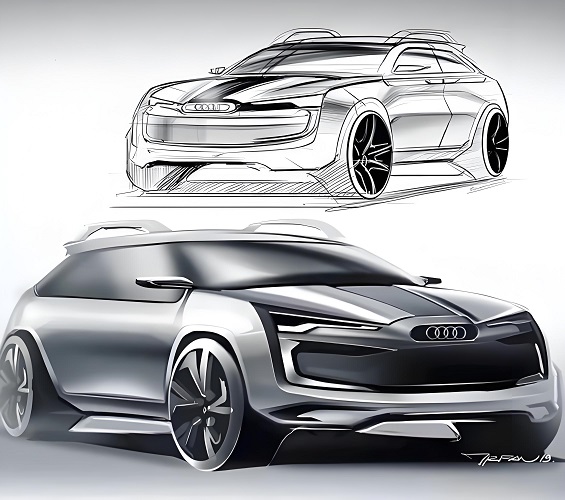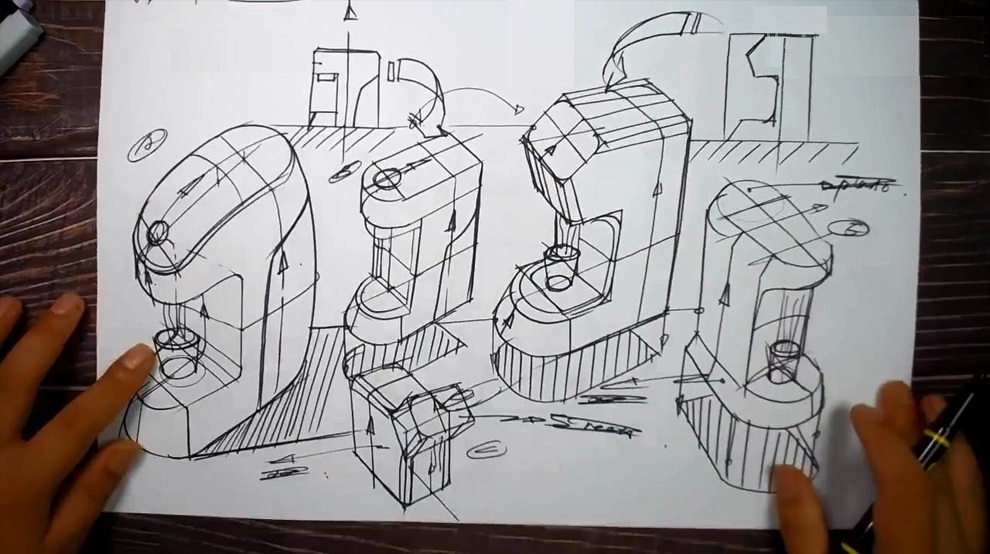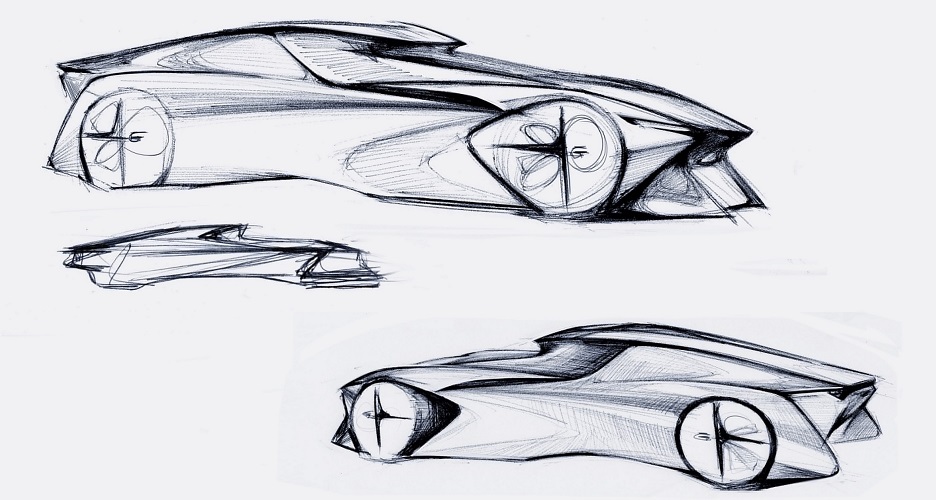Part concept design
 In today's rapidly developing material foundation and spiritual civilization, human creative activities are moving towards diversified needs. Different corporate values produce different types of products and affect various aspects of social economy and daily life. At the same time, due to the irregular commercial competition order and weak brand management awareness of enterprises in the market economy environment, the phenomenon of one-sided pursuit of short-term economic benefits and unfair competition often occurs. Lack of brand concept in product design results in a lack of competitiveness in branding products from image to internal culture. Moreover, companies lacking brand awareness often result in a lack of social responsibility, causing damage to natural resources and ecology in the production process, which in turn affects the survival of our next generation and the development of society.
In today's rapidly developing material foundation and spiritual civilization, human creative activities are moving towards diversified needs. Different corporate values produce different types of products and affect various aspects of social economy and daily life. At the same time, due to the irregular commercial competition order and weak brand management awareness of enterprises in the market economy environment, the phenomenon of one-sided pursuit of short-term economic benefits and unfair competition often occurs. Lack of brand concept in product design results in a lack of competitiveness in branding products from image to internal culture. Moreover, companies lacking brand awareness often result in a lack of social responsibility, causing damage to natural resources and ecology in the production process, which in turn affects the survival of our next generation and the development of society.
At present, the design of product transformation into branded products mostly remains at the level of innovative design for brand visual recognition and promotion, which is an effective means of product branding strategy. The design approach for product branding should be based on several aspects, including the matching of brand and user emotional value, the internal balance between product and humanistic emotions, and the memory connection between brand association and product five sensory experience. This provides a possible way and guarantee for the implementation of product branding strategy.
 Due to the need to comprehensively determine the entire product strategy, appearance, structure, and functionality during the product design phase, in order to determine the layout of the entire production system, the significance of product design is significant and has the important significance of "influencing the whole situation with one factor". If the design of a product lacks a production perspective, it will incur significant costs to adjust and replace equipment, materials, and labor during production. On the contrary, good product design not only reflects superior functionality, but also facilitates manufacturing and has low production costs, thereby enhancing the overall competitiveness of the product. Many companies that have an advantage in market competition pay great attention to the details of product design in order to design products with low cost and unique functions. Many companies in developed countries view design as a popular strategic tool, believing that good design is the key to winning customers.
Due to the need to comprehensively determine the entire product strategy, appearance, structure, and functionality during the product design phase, in order to determine the layout of the entire production system, the significance of product design is significant and has the important significance of "influencing the whole situation with one factor". If the design of a product lacks a production perspective, it will incur significant costs to adjust and replace equipment, materials, and labor during production. On the contrary, good product design not only reflects superior functionality, but also facilitates manufacturing and has low production costs, thereby enhancing the overall competitiveness of the product. Many companies that have an advantage in market competition pay great attention to the details of product design in order to design products with low cost and unique functions. Many companies in developed countries view design as a popular strategic tool, believing that good design is the key to winning customers.

In order for a new product to be recognized by society and achieve economic benefits, it must start from market and user needs and fully meet usage requirements. This is the minimum requirement for product design.
The requirements for use mainly include the following aspects:
The safety of use. When designing products, it is necessary to take favorable measures to prevent and protect against various unsafe factors during use. At the same time, the design should also consider the human-machine engineering performance of the product, making it easy to improve the usage conditions;
Reliability of use. Reliability refers to the probability that a product will function normally within a specified time and under predetermined usage conditions. Reliability is associated with safety. Products with poor reliability can cause inconvenience to users and even pose a risk of use, resulting in damage to the company's reputation;
Easy to use. For civilian products such as household appliances, ease of use is crucial;
Beautiful appearance and good packaging. Product design also needs to consider aesthetic issues related to the product, as well as the relationship between the product's appearance, usage environment, and user characteristics. Under possible conditions, products that users love should be designed to enhance their aesthetic value.
Manufacturing process requirements. The most basic requirement of production process for product design is that the product structure should comply with the process principles. That is to say, under the specified production scale conditions, economical processing methods can be used to manufacture products that meet quality requirements. This requires the designed product structure to minimize the labor required for product manufacturing, reduce the weight of the product, decrease material consumption, shorten production cycles and manufacturing costs.
Product strategy: Through market analysis, competitor analysis, audience profiling, style determination, CMF application, series planning and other strategic analysis, we aim to identify precise selling points for the product, find design solutions, and enable value and creativity to coexist.
Appearance design: With a professional appearance design team, we use scientific product strategy analysis, rigorous design processes, rich experience, and creative breakthroughs to integrate innovation into product details. Through practical design, we turn our products into brand boosters.
Structural Design: The structural team has over ten years of experience in product design, covering communication products, intelligent hardware, 3C digital, home appliances, children's and infant products, medical products, and three proof products. They have accumulated a wealth of design experience and combined professional structural design processes to ensure the perfect implementation of products.
Mechanical Design: Years of industrial design experience have accumulated a large number of mechanical design cases, including innovative application cases in transmission design, simulation design, finite element analysis design, and non-standard mechanical design. We have also assisted clients in applying for utility model patents.
Supply chain management: To meet the complex production process requirements of products, provide a complete set of supply solutions, accelerate the product landing cycle, create industrial design full process design and production services, and change traditional single design services.